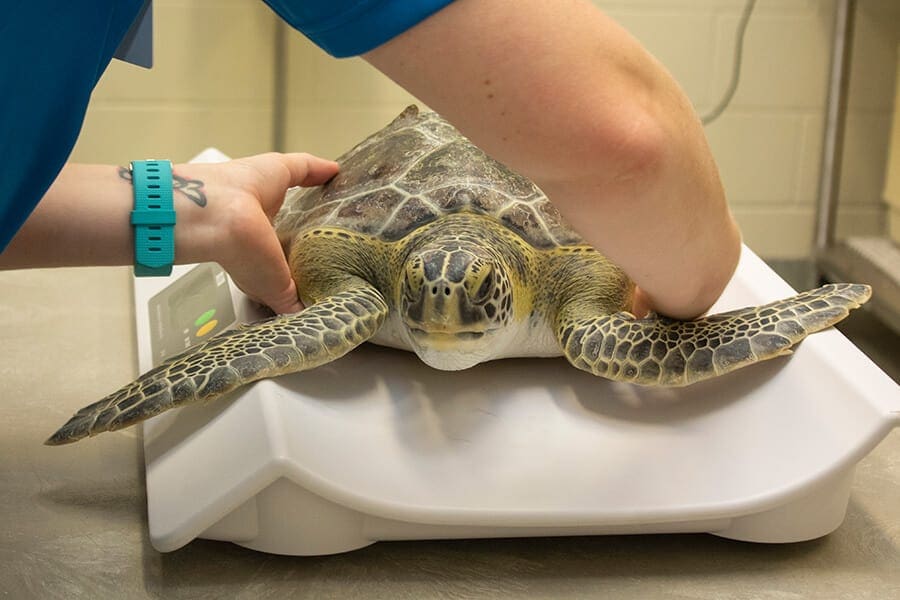

A patient is weighed as part of a routine wellness checkup.
The first week of each new patient’s stay is generally touch and go to see if they will eat and defecate while we monitor their buoyancy and behavior. All patients receive a broad-spectrum antibiotic, and fluid therapy is given to each sea turtle as needed.
Once their intake bloodwork comes back, veterinary staff determine whether other antibiotics are necessary and create an individual treatment plan for the sea turtle.
Each patient undergoes a monthly checkup, which is nearly identical to the intake exam. In the event a sea turtle arrives with a wound (such as a predator interaction), we use raw honey (which has remarkable healing properties) produced by our own beehives or other local hives to treat sea turtles with non-surgical wounds.
Every patient is fed twice daily—once in the morning and once in the afternoon—by our amazing sea turtle volunteers. Their diets include proteins like fish, squid, clams and shrimp; green or red algae; and romaine lettuce and other leafy green vegetables.
Patients with fibropapilloma (FP) tumors receive some additional treatment, such as CT scans, during which we take the turtle to a local veterinary clinic to check if internal tumors are present. In many cases, FP sea turtles may also need to undergo tumor removal surgery, which is performed onsite by our veterinary team.
Did you know it costs roughly $2,000 to treat and release just one patient? Help us get more sick and injured sea turtles back on their flippers and out in the ocean by contributing to our #GivingZOOday campaign!
